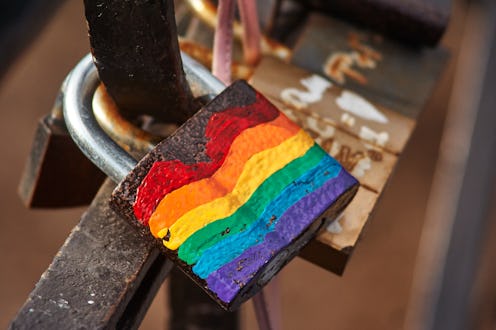
Oh boy. People really do not want to let go of the Kinsey scale. But it's time, you guys. It's really, really time. The latest foray into using it in the name of bad science involves a re-imagining of the scale, originally developed by Alfred Kinsey & Co. in the late 1940s to measure sexual orientation on a scale from 0 to 6, with 0 being exclusively heterosexual and 6 being exclusively homosexual. This re-imagining, called the Purple-Red Scale of Human Attraction, attempts to take expressions of asexuality into account, and apply them to Kinsey's scale. At face value, that sounds great! The Kinsey scale has widely been critiqued for leaving out folks of asexual orientation, and the person who developed the Purple-Red Scale is inclusive of aromantic asexuals, as well as romantic asexuals, plus folks who experience tertiary sexuality, and secondary sexuality. Folks who experience sexual desire are represented by the attraction types "primary sexuality" and "hyper sexuality." A breakdown of what those identities mean, if you need a refresher, and their placement on the Purple-Red Scale follows:
"A (Aromantic Asexuality): Experiences no attraction, besides friendship and/or aesthetic attraction.B (Romantic Asexuality): Not interested in sexual relations whatsoever, but open to romance, touch, or bonds stronger than friendship.C (Tertiary Sexuality): Experiences no sexual attraction, but willing to do it for other reasons, such as children, pleasing their partners, etc.D (Secondary Sexuality): May develop lustful feelings over the course of a relationship, but not at first.E (Primary Sexuality): Sexual desire is established from the get-go, even if it is not acted upon. However, other components (such as companionship) are essential to these individuals.F (Hyper Sexuality): Sex is the be-all-end-all purpose of any relationship. Everything else is just a consolation prize or means to an end."
So nuanced! So inclusive!
So the way you're identified on the Purple-Red Scale is with the letter that corresponds to your attraction type, plus the Kinsey scale number from 0-6 that describes your sexual orientation. If you identify as a homoflexible, romantic asexual, then you would be a B5. If you identify as an exclusively straight, hypersexual person, then you would be an F0. Except there's still one giant problem with the Kinsey scale that not even this admirable attempt at updating it tackles: gender isn't binary.
At the risk of repeating myself, I'm going to quote myself from the last time a sex study using the Kinsey scale forced me to address this:
"The Kinsey scale is predicated on the outdated notion that gender is binary. Your only options are to choose whether you are attracted to people assigned the sex you were assigned at birth or people assigned the opposite sex, which isn't how gender works, and thus isn't how we describe sexual orientation anymore. The Kinsey scale assumes a cisgender experience of both the person self-reporting, and the gender to whom they are attracted. The reality behind sexual fluidity is that fluid people find themselves attracted to masculinity, femininity, and/or androgyny, not simply 'men,' 'women,' and/or 'both.' Sometimes the packaging of 'biological sex' matters in the attraction, but most of the time, it doesn't. The Kinsey scale, however, only works in terms of 'same or opposite sex.'"
As the way people define their gender identity grows more complex, so, too, will the way people define their sexual orientation. It's impossible to measure attraction to a gender identity on a binary scale, even with the extra accounting of asexual identities.
To paraphrase my close personal friend Regina George in this matter: "Stop trying to make the Kinsey Scale happen. It's not going to happen.